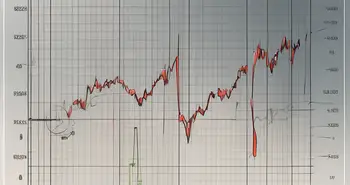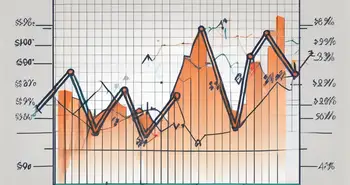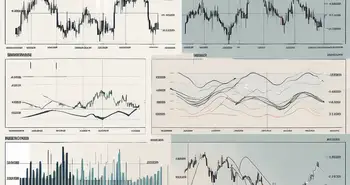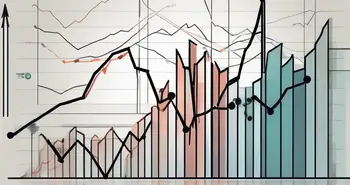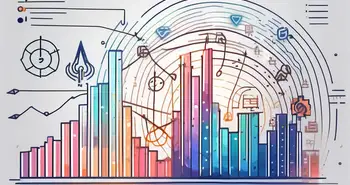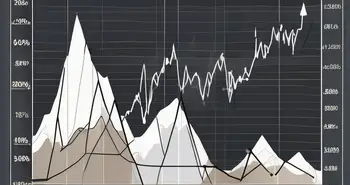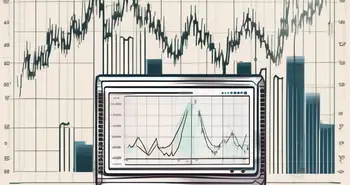A Comprehensive Guide for the Volume Oscillator
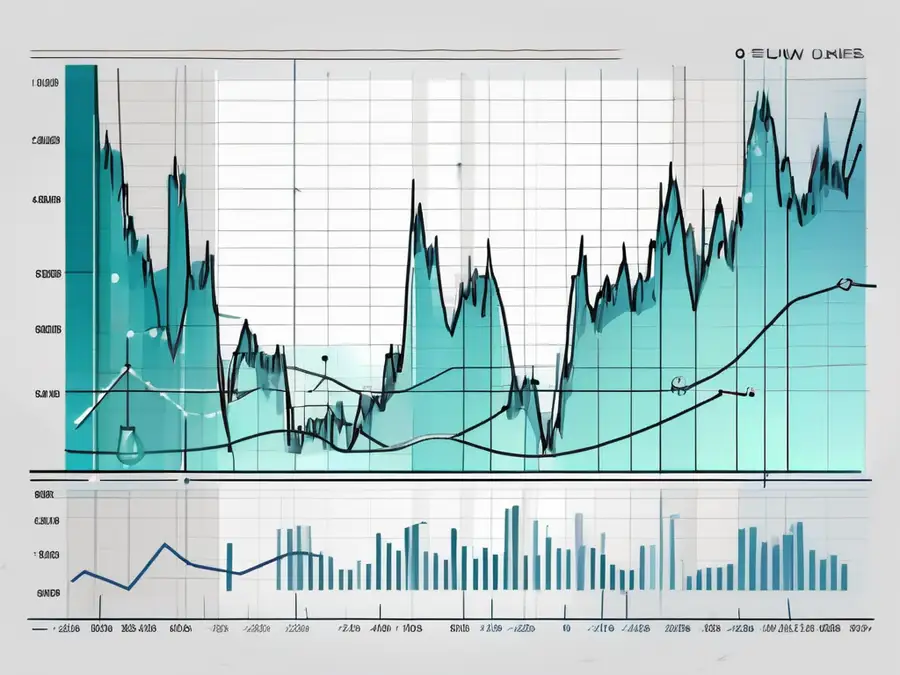
As an expert in the field of trading and technical analysis, I am here to provide you with a comprehensive guide to understanding the volume oscillator. If you're a trader looking to deepen your knowledge and enhance your techniques, this article is for you.
What is a Volume Oscillator?
A volume oscillator is a technical indicator used in financial markets to analyze the volume of trading activity. It measures the relationship between volume and price movements, helping traders identify potential trends and reversals.
Volume oscillators are an essential tool for traders as they provide valuable insights into market dynamics. By examining the volume of trades, traders can gain a deeper understanding of the supply and demand forces at play in the market. This knowledge can help them make more informed trading decisions and potentially increase their profitability.
The Basics of Volume Oscillators
Volume oscillators are based on mathematical formulas that calculate the difference between two moving averages of volume. By plotting this difference on a chart, traders can visually identify patterns that indicate buying or selling pressure in the market.
By analyzing the volume oscillator, traders can determine the strength of a trend. If the volume oscillator is rising, it suggests that bullish momentum is increasing, indicating a potential uptrend. Conversely, a falling volume oscillator indicates bearish pressure, signaling a potential downtrend.
It is important to note that volume oscillators should not be used in isolation but rather in conjunction with other technical indicators and analysis tools. By combining different indicators, traders can confirm signals and increase the accuracy of their trading decisions.
Key Components of a Volume Oscillator
There are several key components to consider when analyzing volume oscillators:
- Fast and Slow Moving Averages: Typically, volume oscillators compare a faster moving average (shorter time period) against a slower moving average (longer time period). This comparison helps smooth out the data and reduce noise, making it easier to identify trends.
- Overbought and Oversold Levels: Volume oscillators often have predefined levels that signal extreme buying or selling conditions. These levels can help traders anticipate potential reversals in the market. When the volume oscillator reaches the overbought level, it suggests that the market may be due for a downward correction. Conversely, when it reaches the oversold level, it indicates that the market may be ripe for an upward correction.
- Divergence: Divergence occurs when the price of an asset and the volume oscillator move in opposite directions. This can be a powerful indication of trend exhaustion and potential trend reversals. For example, if the price of an asset is making higher highs, but the volume oscillator is making lower highs, it suggests that the buying pressure is weakening, and a trend reversal may be imminent.
By understanding these key components and analyzing volume oscillators, traders can gain valuable insights into market trends and reversals. This knowledge can help them make more informed trading decisions and potentially increase their profitability.
The Importance of Volume Oscillators in Trading
Understanding volume oscillators is crucial for traders who want to effectively analyze market trends and make informed trading decisions.
Volume oscillators are technical indicators that are used to analyze and interpret changes in trading volume over a given period of time. They are based on the premise that volume often precedes price movements in the market. By studying volume patterns, traders can gain valuable insights into market trends and potential trading opportunities.
Identifying Market Trends with Volume Oscillators
Volume oscillators can be used to confirm market trends. When volume increases in the direction of the prevailing trend, it suggests that the trend is strong and likely to continue. This is because higher volume indicates greater market participation and conviction among traders. On the other hand, decreasing volume while the price is still rising or falling may indicate a weakening trend and potential trend reversal.
For example, let's say a stock has been in an uptrend, with prices steadily rising. By analyzing the volume oscillators, traders can look for confirmation of this trend. If they observe that the volume is consistently increasing as the stock price rises, it provides additional evidence that the uptrend is strong and likely to continue. Conversely, if they notice a decrease in volume while the price is still rising, it may suggest that the uptrend is losing momentum and a trend reversal could be imminent.
By incorporating volume oscillators into their analysis, traders can gain a more comprehensive understanding of market trends and make more informed trading decisions.
Volume Oscillators and Market Volatility
Volume oscillators can also help traders gauge market volatility. High volume during periods of volatility can indicate increased market participation and potential trading opportunities. This is because heightened volatility often leads to larger price swings, presenting traders with opportunities to profit from short-term price movements.
Conversely, low volume during periods of volatility may suggest a lack of interest or uncertainty among market participants. This could be due to various factors such as economic uncertainty, geopolitical tensions, or upcoming news events. Traders should be cautious when trading in low-volume, volatile markets as they can be prone to sudden and unpredictable price movements.
For example, during an earnings season, when companies release their financial results, there is often increased market volatility. Traders can use volume oscillators to identify periods of high volume, indicating increased market participation and potential trading opportunities. By analyzing the volume patterns during these periods, traders can make more informed decisions and capitalize on short-term price movements.
Overall, volume oscillators are valuable tools for traders as they provide insights into market trends and volatility. By incorporating these indicators into their analysis, traders can enhance their understanding of the market and make more informed trading decisions.
Different Types of Volume Oscillators
There are several types of volume oscillators commonly used by traders. Let's take a closer look at three popular ones:
Volume Rate of Change (ROC)
The volume rate of change measures the percentage change in volume over a specified time period. It helps traders identify the speed at which volume is increasing or decreasing, providing insights into market momentum.
On Balance Volume (OBV)
The on balance volume indicator considers the cumulative volume of an asset. It adds volume on up days and subtracts volume on down days. OBV can be used to confirm price trends and identify potential trend reversals.
Money Flow Index (MFI)
The money flow index calculates the volume-weighted average price and evaluates the flow of money into and out of an asset. It helps traders assess buying and selling pressure in the market and potential trend reversals.
How to Interpret Volume Oscillator Signals
Interpreting volume oscillator signals requires a solid understanding of its components and their relationships. Let's explore some key points:
Understanding Positive and Negative Values
A positive value on a volume oscillator indicates buying pressure, while a negative value suggests selling pressure. Traders analyze the magnitude and direction of these values to identify potential shifts in market sentiment.
The Significance of Divergences
Divergences occur when the price of an asset and the volume oscillator move in opposite directions. They can provide valuable insights into potential trend reversals. Bullish divergence occurs when the price makes lower lows while the volume oscillator makes higher lows. Conversely, bearish divergence occurs when the price makes higher highs while the volume oscillator makes lower highs.
Strategies for Using Volume Oscillators
Combining volume oscillators with other indicators can enhance the accuracy of trading signals. Here are a couple of strategies to consider:
Combining Volume Oscillators with Other Indicators
Pairing volume oscillators with other technical indicators, such as moving averages or trend lines, can provide additional confirmation of trading signals. This combination allows traders to filter out false signals and focus on high-probability trading opportunities.
Timing Trades with Volume Oscillators
Volume oscillators can be used to time trades more effectively. For example, traders may initiate a trade when the volume oscillator crosses above or below a predefined level, signaling a potential shift in market sentiment.
Frequently Asked Questions
What is a volume oscillator?
A volume oscillator is a technical indicator used in financial markets to analyze trading volume. It helps traders identify potential trends, reversals, and market volatility.
How can volume oscillators be used to identify market trends?
Volume oscillators can confirm market trends by analyzing the relationship between volume and price movements. Increasing volume in the direction of the prevailing trend suggests a strong trend, while decreasing volume may indicate a weakening trend.
What are some common types of volume oscillators?
Some common types of volume oscillators include the Volume Rate of Change (ROC), On Balance Volume (OBV), and Money Flow Index (MFI). Each oscillator has its own calculations and is used to assess different aspects of volume and price movements.
How can volume oscillators be combined with other indicators?
Combining volume oscillators with other indicators, such as moving averages or trend lines, can provide additional confirmation of trading signals. This combination allows traders to filter out false signals and focus on high-probability trading opportunities.
What is the significance of divergences in volume oscillators?
Divergences occur when the price of an asset and the volume oscillator move in opposite directions. They can indicate potential trend reversals. Traders look for bullish or bearish divergences to identify possible turning points in the market.
Remember, mastering volume oscillators takes time and practice. By incorporating these techniques and strategies into your trading arsenal, you'll be equipped with valuable insights to navigate the dynamic world of financial markets.
Now that you've gained valuable insights into the volume oscillator and its role in enhancing your trading strategies, it's time to put your knowledge into action. Experience the future of trading with Morpher, the revolutionary platform that's redefining investing with blockchain technology. Sign up today to enjoy zero fees, infinite liquidity, and the flexibility of fractional investing. Plus, take advantage of short selling across diverse markets, secure your investments with the Morpher Wallet, and amplify your trades with up to 10x leverage. Don't miss out on a unique trading experience with Virtual Futures. Sign Up and Get Your Free Sign Up Bonus to start your journey with Morpher, where innovation meets investing.

Disclaimer: All investments involve risk, and the past performance of a security, industry, sector, market, financial product, trading strategy, or individual’s trading does not guarantee future results or returns. Investors are fully responsible for any investment decisions they make. Such decisions should be based solely on an evaluation of their financial circumstances, investment objectives, risk tolerance, and liquidity needs. This post does not constitute investment advice.

Painless trading for everyone
Hundreds of markets all in one place - Apple, Bitcoin, Gold, Watches, NFTs, Sneakers and so much more.

Painless trading for everyone
Hundreds of markets all in one place - Apple, Bitcoin, Gold, Watches, NFTs, Sneakers and so much more.

